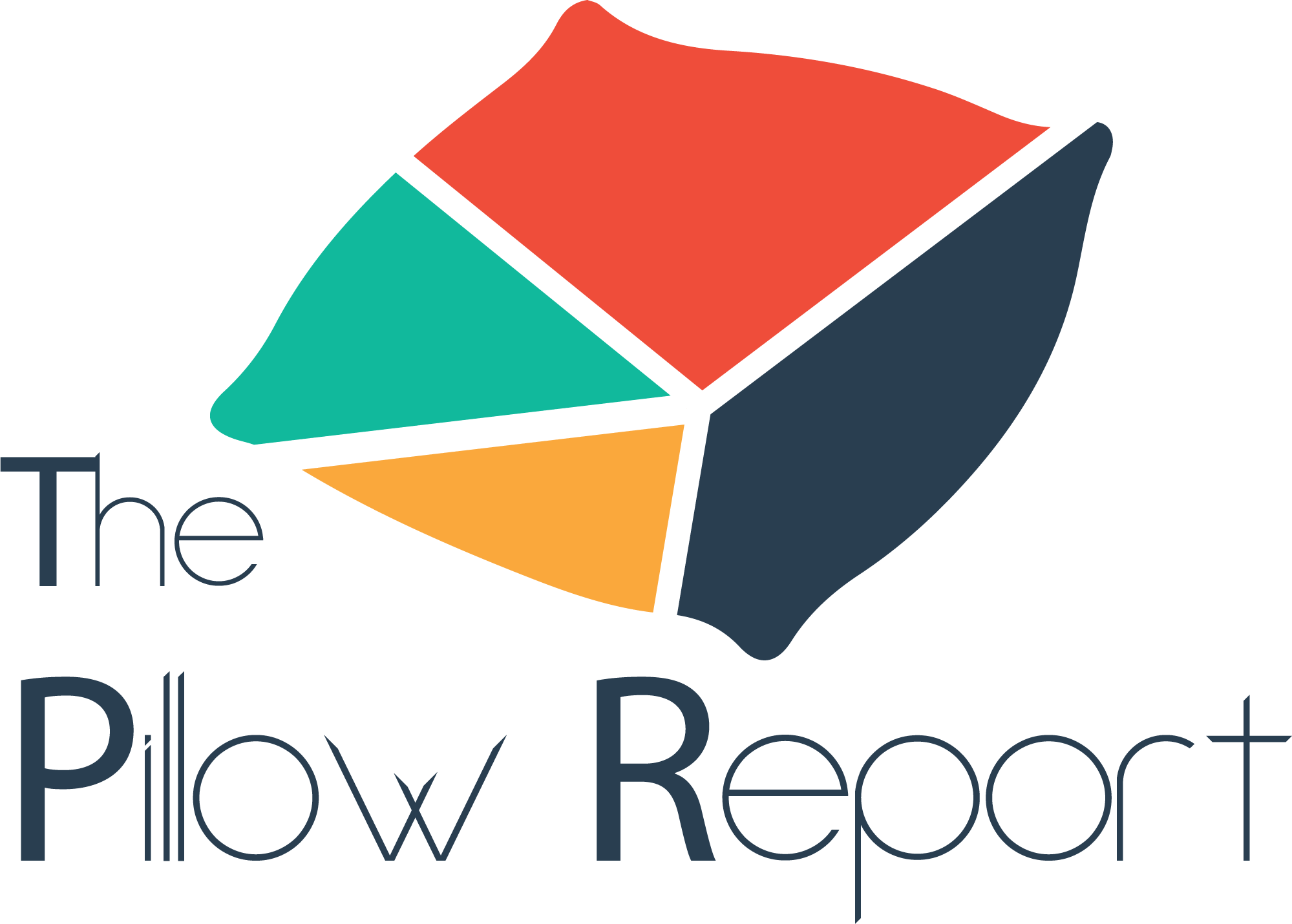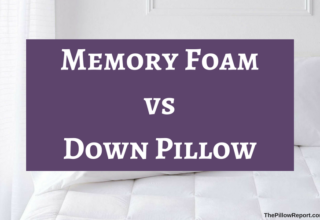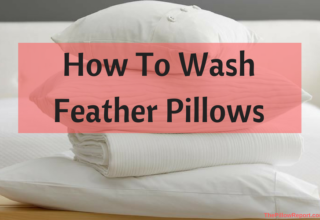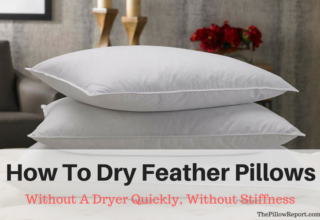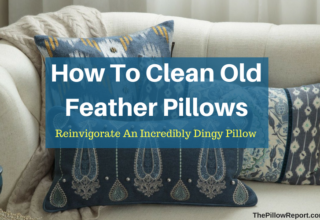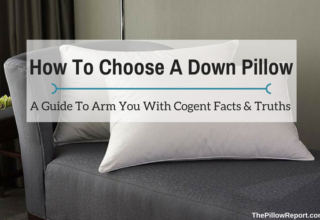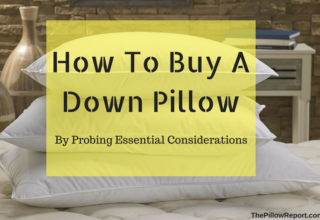As you turn down the sheets and tumble into bed, feather and down pillows cuddly nod you off to dreamland in a cloud-like head cradle. They’re ultra-durable, moldable and compatible with all sleeping positions. Although feather vs. down pillows manifest stark differences, their similar qualities make them two peas in the pod.
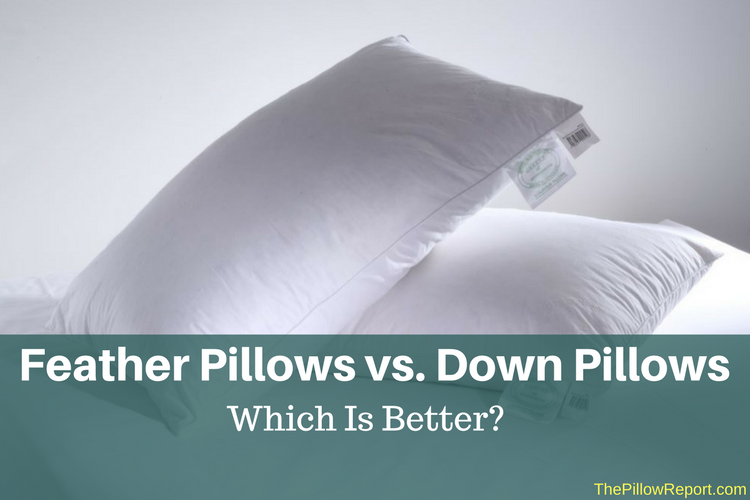
Both generate a super-light material that insulates your body. They also act as a coolant when your surroundings warm up, making them all season. Heavier than down, feathers create a highly supportive pillow ideal for back or side sleepers.
Down spawns from the bottom, fluffy portion a bird’s feather for plush, soft and supple pillows that do the job in all sleeping positions.
Things To Consider | Feather Pillows vs. Down Pillows
1. Down vs. Feather Have Structural Differences
Down Filling
Down delicate soft feathers sprout underneath a bird’s body to conserve heat and keep it fresh when temperatures increase. Down clusters take the catbird’s seat as nature’s warmest material relative to its negligible weight.
They mimic a dandelion’s head, and mature down has almost the same size. The gorgeous loft comes from the down clusters continually reverting to their natural rounder and spherical shape.
Feather Filling
Feathers come from duck and geese and have a soft, hard spine known as a quill, with hair-like fibrils radiating from it like a sail and filament. Diverse bird species use feathers for flight, natural insulation and keeping them dry. Quills and delicate feathers cause the pillow to flatten like a pancake over time.
2. Performance in Support & Comfort
Feathers tilt the scales with more weight and thus render superior support than down solely. Down clusters cannot offer strong support due to their soft and supple build.
Premium quality feather pillows stash tiny, highly curled feathers while goose down clusters has a super-massive and fluffier structure with higher loft to last longer.
More resilient down tends to endure bed ravages for decades with proper care. Feathers’ quills wear down quickly making them less durable.
Quills thread through and escape causing feather pillows to diminish support faster than down. Top-class feather-filled rests come with a barrier weave shell to inhibit quill leakage.
Down pillows constitute of soft, more delicate plumages for a moldable in shape with more curved support for your head or neck to settle into the pillow.
3. Sleeping Positions
Feather pillows make a perfect match for back and side sleepers as they get improved malleability, to seamlessly attune and promote a neutral curvature of the neck and spine.
Down-filled pillows dovetail with all sleeping positions as due to their more moldable formation and tend to retain its shape correctly.
If you want the minimal loft in your pillow, feather-and-down filled ones tend to compress. They offer the most excellent option for sleepers angling for a lower-profile version with minimized loft.
Sleepers who have a penchant for curling up with a pillow should go for down due to its unsurpassed softness and malleability. Down pillows allow you to scrunch them up to enlarge it and infuse pretty of loft.
4. Down and Feather Mixture
Manufacturers blend down and feather to offset the downsides of both types of natural fills. Down and feather combine to render added support while inhibiting the leak out of quills. The mixture will do the job for back or side sleepers.
- Some pillows come with an extra cushioning, or fill, offered by outer feathers.
- In the US, the FTC urges manufacturers to label down beddings accurately. Any pillow provided as “down” should compose of a minimum of 75% down feathers.
- A higher percentage of down feathers makes products pricier.
- Pillows stashing down feathers below 75% sell as “feather pillows.”
5. PROs and CONs of Down Pillows
- Easily Moldable: Highly responsive to pressure and they can attune in their shape for a more contoured backing for the head or neck
- Superior Loft: As it’s moldable, you can scrunch it up and enlarge it for increased loft
- Durable: Resilient, more robust and more substantial down clusters outlive their quill-encumbered counterparts
- Lightweight: Down has a light-as-feather weightlessness
- Quiet: Down pillows create scratching or moving sounds as you toss and turn your head
- Expensive: Down gobbles up more dollars than feather-filled pillows. More down clusters increase Fill Power while feathers lack this quality.
- Unpacking odor though it wanes after a few days
- Allergenic as they age due to gradual contamination
6. PROS & CONS of Feather-Filled Pillows
- Cheaper fill than down
- Quality pillows with small, highly curled feathers cradle your head with softness
- Durable than synthetic filling, lasting three years and above
- Ultra-flexible and easy to shape for a natural contour and natural neck and head curvature
- Lightweight and lighter than air
- Moldable by scrunching up to reform them for their optimum loft
- Feather quills notoriously find their way through the tightest barrier weaves
- Surface scratches a bit noisily than down
- Requires re-fluffing and frequently shaking to restore shape
- Not suitable for allergy sufferers
7. Non-Washable Feather vs. Washable-Kiln-Dry Down
Most manufacturers frown on machine-washing feather pillows. Given that they naturally repel water off geese or ducks back, they get ravaged by water, heat, and chemicals. Add a pillow cover or case and send it to a professional dry cleaner well-versed with the delicate material.
When it comes to drying, stay on the lookout for dumpy spots and tumble-dry the pillow to dehumidify until it’s as dry as a bone. It takes up to 4 hours on medium heat.
8. Down and Feathers Possess Unique Structures or Morphology for Different Purposes
Both down and feathers emanate from the same bird source.
Down refers to the velvet fiber immediately covering the flesh of duck or geese in a vast constellation of filaments with a central core where they sprawl out like sun rays in all directions. It makes the material clumping-proof.
Feathers attached to the body through a shaft intersecting them at the center to create an outer layer.
Down offers superior natural insulation, managing to capture body heat while allowing air circulation.
Feathers have a firmer structure that does not flex out of shape with a super-soft and fluffy feel.
Final Verdict
Our feather pillows vs. down pillows opus dispels the myth that the two materials make a spitting image of each other. The fillings differ structurally and functionally, rendering various levels of support to cradle your head or neck.
But feather pillows also feel airy, super-light and lush while it’s moldable and feels like a bed of roses if the quills never poke through. Feather pillows shore up your vertebrae naturally for a side or back posture but down offers multi-positional sleeping.
